Related Research Articles
The Pre-Raphaelite Brotherhood was a group of English painters, poets, and art critics, founded in 1848 by William Holman Hunt, John Everett Millais, Dante Gabriel Rossetti, William Michael Rossetti, James Collinson, Frederic George Stephens and Thomas Woolner who formed a seven-member "Brotherhood" modelled in part on the Nazarene movement. The Brotherhood was only ever a loose association and their principles were shared by other artists of the time, including Ford Madox Brown, Arthur Hughes and Marie Spartali Stillman. Later followers of the principles of the Brotherhood included Edward Burne-Jones, William Morris and John William Waterhouse.
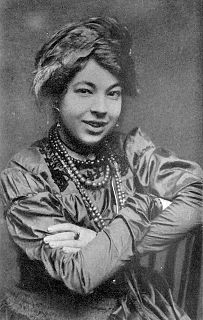
Pamela Colman Smith, also nicknamed Pixie, was a British artist, illustrator, writer, publisher, and occultist. She is best known for illustrating the Rider–Waite tarot deck for Arthur Edward Waite. This tarot deck became the standard among tarot card readers, and remains the most widely used today. Colman also illustrated over 20 books, wrote two collections of Jamaican folklore, edited two magazines, and ran the Green Sheaf Press, a small press focused on women writers.

Walter Weedon Grossmith, better known as Weedon Grossmith, was an English writer, painter, actor, and playwright best known as co-author of The Diary of a Nobody (1892) with his brother, music hall comedian and Gilbert and Sullivan star George Grossmith. Weedon Grossmith also illustrated The Diary of a Nobody to much acclaim.
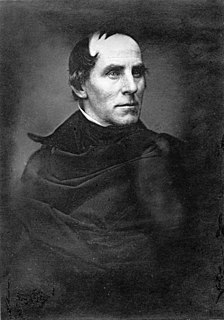
Thomas Cole was an Anglo-American painter known for his landscape and history paintings. One of the major 19th-century American painters, he is regarded as the founder of the Hudson River School, an American art movement that flourished in the mid-19th century. Cole's work is known for its romantic portrayal of the American wilderness.

Alexander Young Jackson was a Canadian painter and a founding member of the Group of Seven. Jackson made a significant contribution to the development of art in Canada, and was instrumental in bringing together the artists of Montreal and Toronto. He exhibited with the Group of Seven from 1920. In addition to his work with the Group of Seven, his long career included serving as a War Artist during World War I (1917–19) and teaching at the Banff School of Fine Arts, from 1943 to 1949. In his later years he was artist-in-residence at the McMichael Canadian Art Collection in Kleinburg, Ontario.

Arthur Hughes was an English painter and illustrator associated with the Pre-Raphaelite Brotherhood.

Joaquín Sorolla y Bastida was a Spanish painter. Sorolla excelled in the painting of portraits, landscapes and monumental works of social and historical themes. His most typical works are characterized by a dexterous representation of the people and landscape under the bright sunlight of Spain and sunlit water.
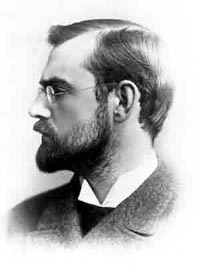
Archer Milton Huntington was a philanthropist and scholar, primarily known for his contributions to the field of Hispanic Studies. He founded The Hispanic Society of America in New York City, and made numerous contributions to the American Geographical Society.

Arthur Bowen Davies was an avant-garde American artist and influential advocate of modern art in the United States c. 1910–1928.

Luminism is a late-impressionist or neo-impressionist style in painting which devotes great attention to light effects.

Arthur Wesley Dow was an American painter, printmaker, photographer and an arts educator.
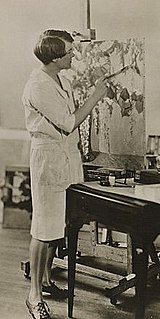
Jane Peterson (1876–1965) was a graduate of Pratt Institute and an American Impressionist and Expressionist painter. Her works are created in Impressionist and Expressionist styles using broad swaths of vibrant colors to combine an interest in light and in depiction of spontaneous moments and are well known for vivid, rich painted still life, beach scenes along the Massachusetts coast. Her works are housed in museums such as the Metropolitan Museum of Art, the Museum of the City of New York, the National Museum of Women in the Arts and Hirshhorn Museum in Washington D.C, and Pennsylvania Academy of Fine Arts and Philadelphia Museum of Arts in Philadelphia, Pennsylvania.

The Meadows Museum, nicknamed "Prado on the Prairie", is an art museum in Dallas, Texas on the campus of Southern Methodist University (SMU). Operating as a division of SMU's Meadows School of the Arts, the museum houses one of the largest and most comprehensive collections of Spanish art outside of Spain, with works dating from the 10th to the 21st centuries.
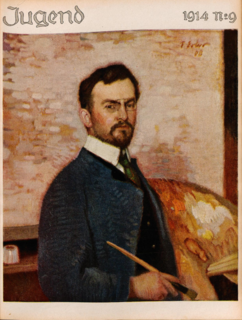
Fritz Erler was a German painter, graphic designer and scenic designer. Although most talented as an interior designer, he is perhaps best remembered for several propaganda posters he produced during World War I.
Dick Perez is an American artist known for his baseball paintings for the National Baseball Hall of Fame and Museum and the Philadelphia Phillies. He is also known for his paintings for various baseball card series. Perez's 2010 book The Immortals: An Art Collection of Baseball's Best, offers a visual history of the 292 members of the Baseball Hall of Fame.
William Edward Bloomfield Starkweather was a painter, teacher, and writer, known for impressionist landscape paintings and book illustrations. He is also known for his research and writings on other painters, and was at one time considered "one of the greatest authorities on Goya".

Walk on the beach, is a 1909 oil on canvas painting by the Spanish painter Joaquín Sorolla.

Joaquín Sorolla García vestido de blanco is an 1896 oil on canvas painting by the Spanish painter Joaquín Sorolla.

Elena Sorolla García was an early 20th-century Spanish sculptor and painter. She devoted her youth to sculpture, having a brief career that she left behind to dedicate herself to her family after marrying Victoriano Lorente in 1922. Most of her works are part of private collections, with the exception of some that belong to the Sorolla Museum. She was the youngest daughter of painter Joaquín Sorolla and curator Clotilde García del Castillo.

Vision of Spain, also known as The Provinces of Spain, is a 1913–19 series of 14 monumental canvases by Spanish painter Joaquín Sorolla depicting the customs, costumes, and traditions of regions of Spain. The series was commissioned by Archie Huntington for the Hispanic Society of America.
References
- ↑ William H. Gerdts, Mary Elizabeth Boone, Mathias J. Alten: Journey of an American Painter (1998), p. 123
- ↑ Arthur Grover Rider, Laguna Art Museum, accessed July 5, 2020
- ↑ Ira Spanierman, Fine American Art from 1845 to 1960, p. 10